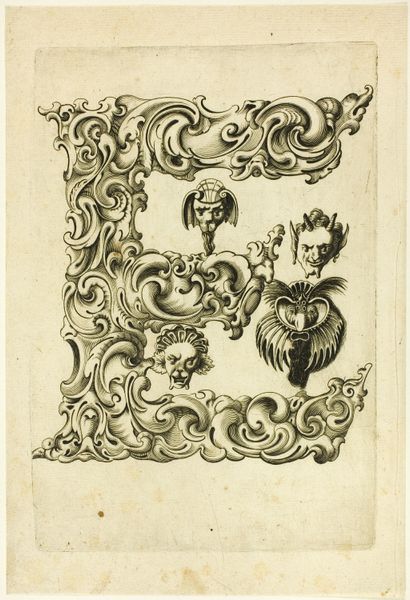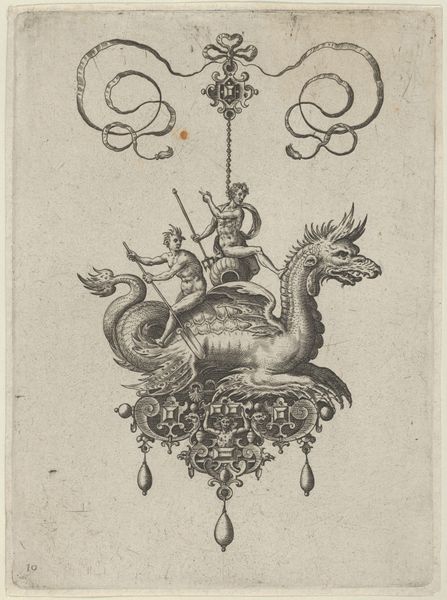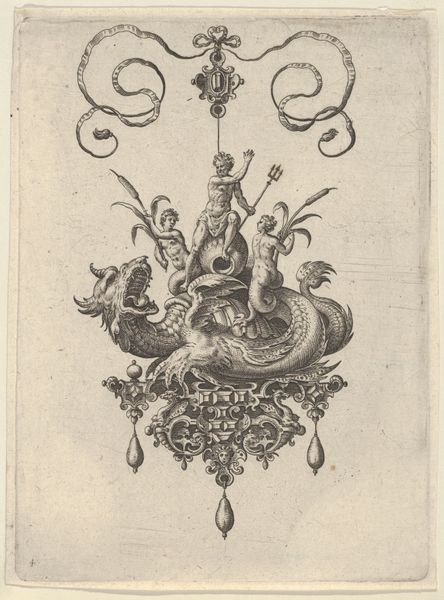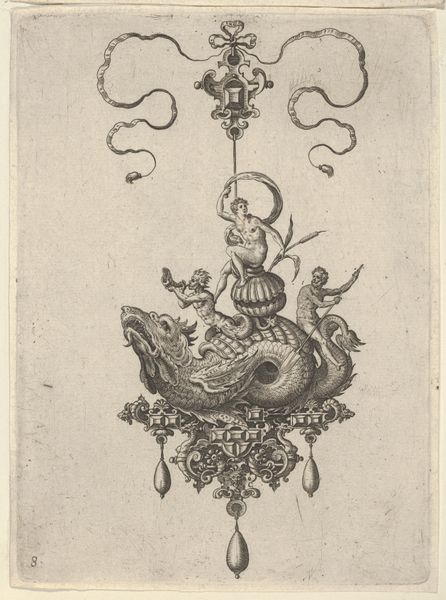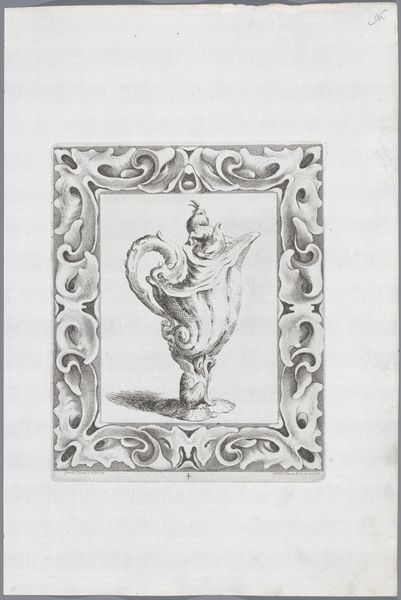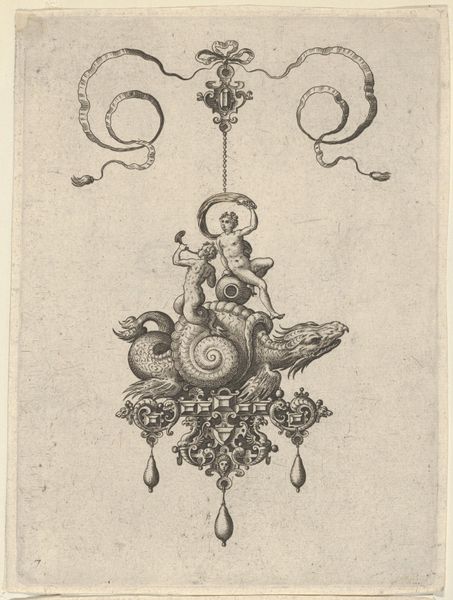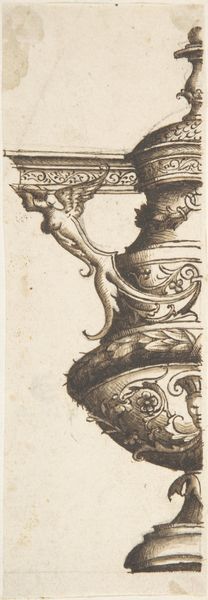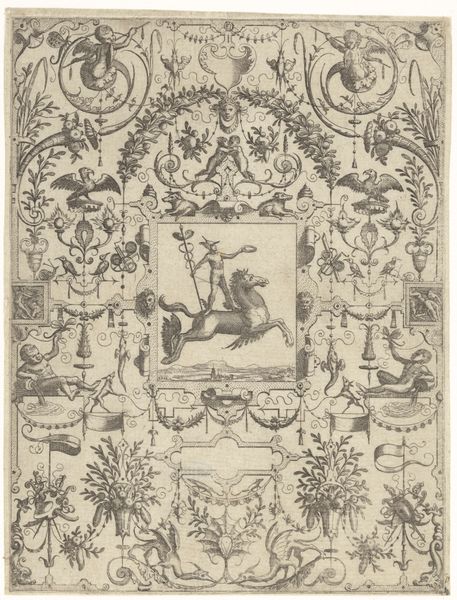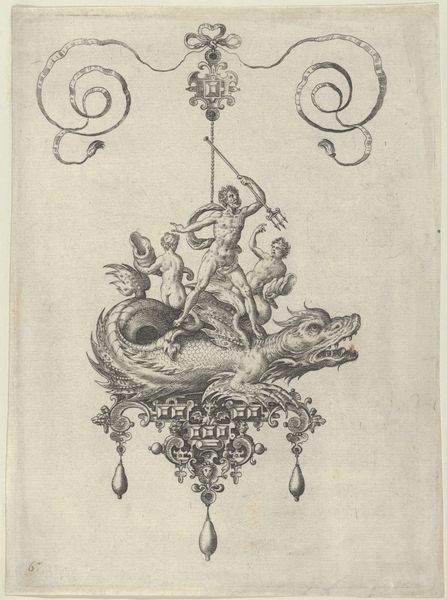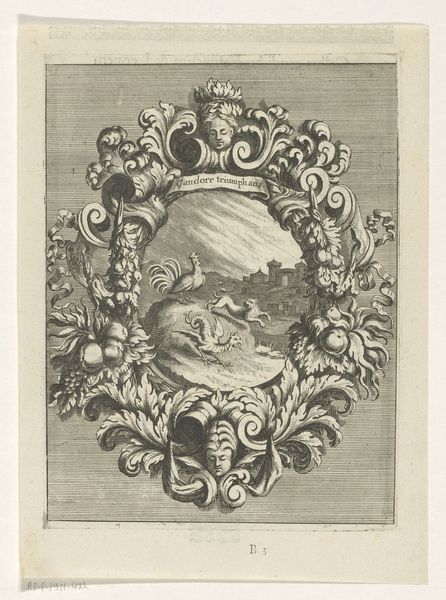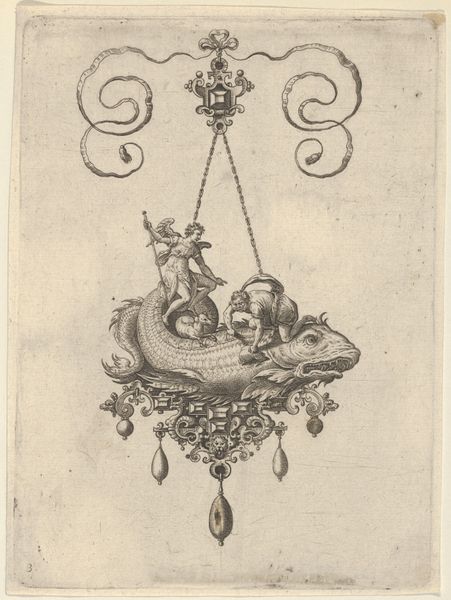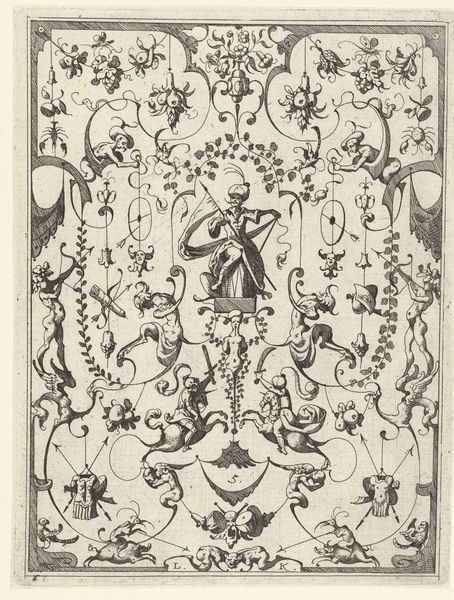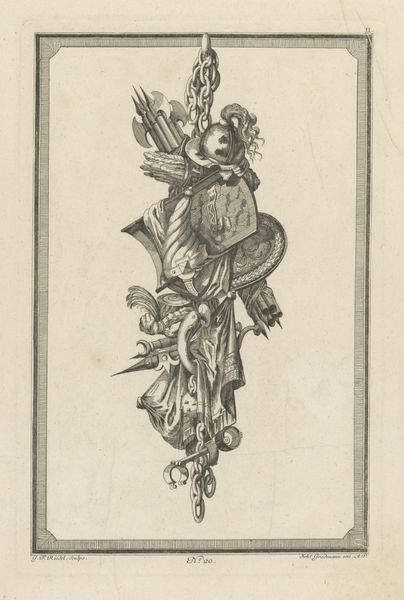
Festivitates Aurifabris (...) / Verscheide Snakeryen dienstich voor Goutsmits, Beelthouwers, Steenhouwers, en alle die de const beminnen (Plate 4) 1654 - 1678
0:00
0:00
drawing, print, engraving
#
drawing
#
baroque
# print
#
pencil drawing
#
decorative-art
#
engraving
Dimensions: Plate: 8 7/8 × 7 5/16 in. (22.6 × 18.6 cm) Sheet: 12 5/16 × 8 1/16 in. (31.3 × 20.5 cm)
Copyright: Public Domain
Editor: Here we have Johannes Lutma the Elder's print, "Festivitates Aurifabris… Plate 4," created sometime between 1654 and 1678. It's an engraving, showing a very ornate goblet inside a decorative border. There’s almost a sense of playful absurdity to it; it's trying so hard to be elegant. How do you interpret this work in its historical context? Curator: The "trying hard" aspect is key. Baroque art is often seen as opulent, but its extravagance can also be interpreted as a response to societal anxieties. This piece, meant as inspiration for goldsmiths, embodies a rising merchant class eager to display its wealth. Consider the historical backdrop: the Dutch Golden Age, fueled by colonialism and trade. This elaborate goblet becomes not just an object of beauty but also a symbol of power dynamics. What stories are embedded in the materials used to create such an object, and what communities were impacted by its creation? Editor: That's a fascinating perspective! I was only thinking about the aesthetic. Curator: And that aesthetic is intentionally overwrought. Lutma isn’t merely presenting a design; he's showcasing a level of consumption that relies on particular economic systems. The frame, in its own busyness, acts almost as a barrier. Do you see how it could speak to the inaccessibility of such artistry and wealth? Editor: Now that you mention it, yes. The frame almost traps the goblet. So the artwork is commenting on socioeconomic structures? Curator: Precisely. By examining the details – the curves, the embellishments, the shadow and light – we can start to unravel the complex relationship between artistic expression and societal critique. This piece becomes a mirror reflecting the values and contradictions of its time, prompting us to question what beauty truly signifies and whom it serves. Editor: Wow, I'll never look at decorative art the same way again. Thanks for opening my eyes to the socio-political side of what I had thought was just a pretty drawing!
Comments
No comments
Be the first to comment and join the conversation on the ultimate creative platform.
